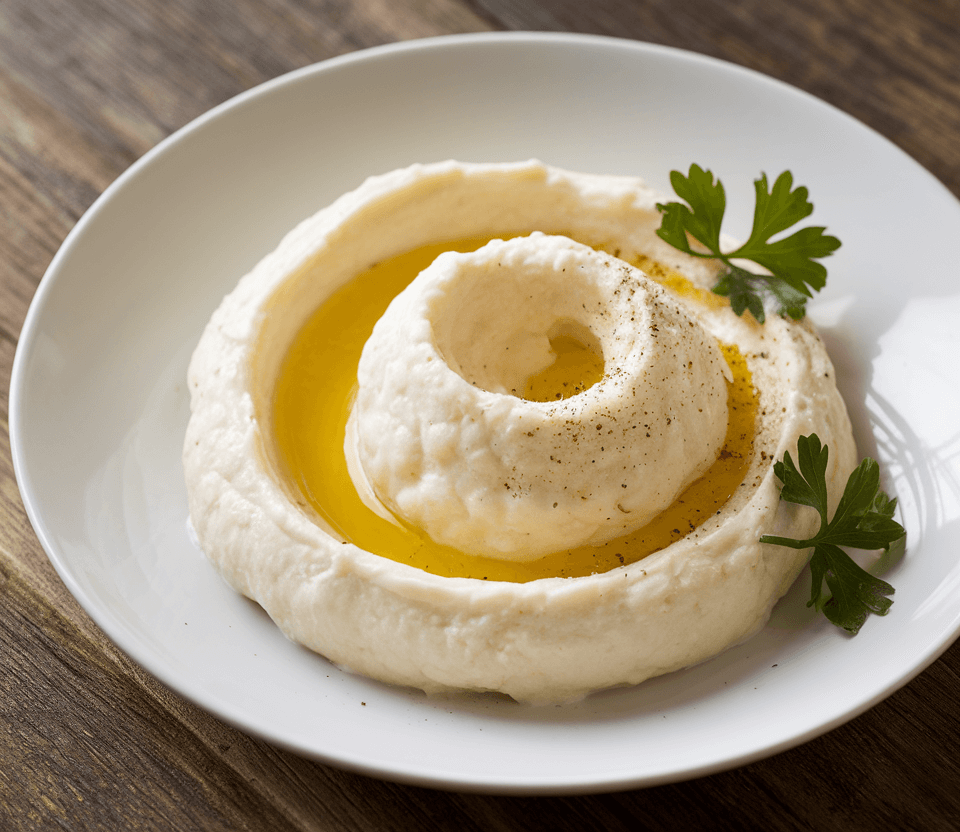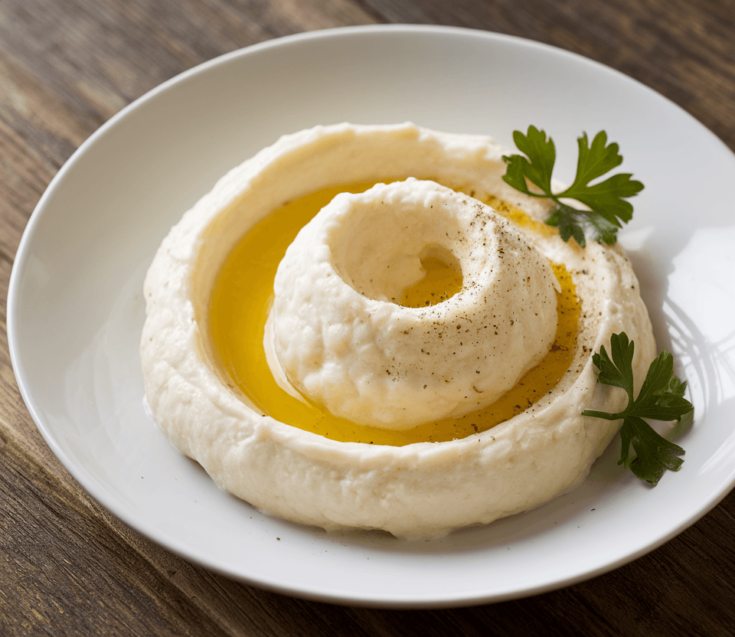Cauliflower Puree is a velvety and delicious alternative to traditional mashed potatoes, offering a lighter yet equally satisfying side dish. This creamy concoction highlights the subtle nutty flavor of cauliflower while providing a smooth texture that pairs beautifully with a variety of main dishes. Perfect for those seeking a low-carb or health-conscious option, cauliflower puree is not just a trend—it’s a delightful addition to any dinner table.

Why You Will Love This Recipe
You’ll fall in love with this cauliflower puree recipe for its incredible flavor and ease of preparation. The dish is remarkably simple—just steam, blend, and serve—allowing even novice cooks to whip it up effortlessly. Its versatile nature makes it a fantastic fit for various diets, including low-carb, gluten-free, and vegan lifestyles. Plus, it’s a great way to sneak in some veggies without sacrificing taste!
Tips and Tricks
To make your cauliflower puree even more flavorful, consider adding roasted garlic or a splash of lemon juice for brightness. Choose fresh cauliflower for the best texture and taste, and make sure to steam it until tender but not mushy. If you prefer a creamier consistency, feel free to add a splash of vegetable broth or a dollop of cream. For an extra touch, garnish with a drizzle of olive oil or sprinkle of fresh herbs right before serving.
Common Mistakes to Avoid
One common mistake is overcooking the cauliflower, which can lead to a watery puree. Ensure you steam it just until fork-tender. Another pitfall is insufficient seasoning—don’t be shy with salt and pepper! Lastly, using a blender instead of a food processor can result in a gluey texture, so stick with a food processor for the best results.
Make Ahead Tips
You can prep the cauliflower ahead of time by cutting it into florets and storing it in an airtight container in the refrigerator for up to three days. Alternatively, you can make the puree up to two days in advance; just store it in the fridge and reheat gently over low heat, adding a touch of broth if it thickens too much.
Recipe Variations
Feel free to customize your cauliflower puree! For a cheesy twist, stir in some grated Parmesan or nutritional yeast for a vegan version. Add herbs like thyme or rosemary for an aromatic touch, or spice things up with a pinch of cayenne or smoked paprika. You could also blend in roasted vegetables like carrots or garlic for added depth.

How to Serve
Cauliflower puree is best served warm, either as a side dish or a base for a protein. You can dollop it alongside grilled chicken, fish, or sautéed mushrooms. For a beautiful presentation, pipe the puree onto the plate using a pastry bag or simply spoon it in a generous swirl, garnished with fresh herbs, a sprinkle of cracked black pepper, or a drizzle of olive oil.
Pairing Suggestions
This creamy puree pairs wonderfully with a crisp white wine like Sauvignon Blanc or a light Pinot Grigio. For a non-alcoholic option, try sparkling water with lemon. As for side dishes, consider serving it alongside roasted vegetables or a light salad. For dessert, a fruit sorbet would be a refreshing finish.
How to Store
Store any leftover cauliflower puree in an airtight container in the refrigerator for up to four days. For longer storage, freeze the puree in freezer-safe bags or containers, where it will keep for up to three months. To reheat, place it in a saucepan over low heat, stirring frequently, or microwave in short bursts, adding a splash of broth to adjust the consistency.
Equipment Needed
You’ll need a large pot with a steamer basket or a steamer insert, a food processor or a high-speed blender, and a spatula. If you don’t have a food processor, a hand blender can work, but it may take a bit more effort for a smooth texture.
Dietary Adaptations
This recipe is naturally gluten-free and can easily be made vegan by omitting any dairy products. For a nut-free version, simply use vegetable broth or water instead of any nut-based cream. If you’re looking for a dairy-free option, coconut cream or cashew cream can add richness without the dairy.
Seasonal Adaptations
In spring, you can add fresh herbs like basil or mint for a bright flavor, while in fall, a sprinkle of nutmeg or cinnamon can add warmth. If you have access to seasonal vegetables, consider mixing in some roasted carrots or sweet potatoes during the cooler months.
Cost Breakdown
This cauliflower puree recipe is budget-friendly, with an estimated cost of around $2 per serving. To cut costs, consider using frozen cauliflower, which is often more affordable and just as nutritious. You can also use pantry staples for seasoning, making this dish both economical and delicious.
Kitchen Hacks
To quickly chop cauliflower, remove the stem and leaves, then cut it into large chunks before slicing each chunk into florets. If you’re short on time, you can also steam the cauliflower in the microwave with a little water in a covered bowl for about 5-7 minutes, checking for tenderness.
Recipe FAQs
Q: Can I use frozen cauliflower?
A: Yes, frozen cauliflower works well. Just steam or microwave it according to the package instructions before blending.
Q: How can I make this recipe lower in calories?
A: You can substitute heavy cream with low-fat milk or vegetable broth to lighten it up while still keeping it creamy.
Q: How long does it take to cook the cauliflower?
A: Steaming the cauliflower typically takes about 10-15 minutes, depending on the size of your florets.
Cauliflower Puree

Cauliflower Puree is a velvety and delicious alternative to traditional mashed potatoes, offering a lighter yet equally satisfying side dish. This creamy concoction highlights the subtle nutty flavor of cauliflower while providing a smooth texture that pairs beautifully with a variety of main dishes.
Ingredients
- 1 large head of cauliflower, cut into florets
- 2 tablespoons olive oil or butter
- ½ cup vegetable broth or water
- Salt and pepper, to taste
- Optional: 2-3 cloves roasted garlic or a splash of lemon juice
Instructions
- Begin by washing and cutting the cauliflower into evenly sized florets to ensure even cooking.
- In a large pot, bring about an inch of water to a boil. Place the steamer basket in the pot, making sure the water doesn’t touch the bottom of the basket.
- Add the cauliflower florets to the basket, cover, and steam for about 10-15 minutes, or until fork-tender.
- Once cooked, transfer the cauliflower to a food processor. Add the olive oil (or butter), vegetable broth (or water), and season generously with salt and pepper.
- Blend until smooth and creamy, scraping down the sides as needed. If it’s too thick, add more broth to achieve your desired consistency.
- Taste and adjust seasoning, adding roasted garlic or lemon juice if desired.
- Serve immediately, garnished with your choice of herbs or a drizzle of olive oil.
Nutrition Information
Yield
4Serving Size
1Amount Per Serving Calories 141Total Fat 11gSaturated Fat 3gTrans Fat 0gUnsaturated Fat 7gCholesterol 8mgSodium 219mgCarbohydrates 10gFiber 5gSugar 5gProtein 4g
Dinnerfocus.com, occasionally offers nutritional information for recipes contained on this site. This information is provided as a courtesy and is an estimate only. This information comes from online calculators. Although allchickenrecipes.com attempts to provide accurate nutritional information, these figures are only estimates.
Final Thoughts
Cauliflower puree is a delightful and versatile dish that everyone can enjoy, regardless of dietary preferences. Its creamy texture and subtle flavor make it an ideal canvas for adding your favorite ingredients and seasonings. Whether you serve it alongside a hearty protein or as part of a vegetarian feast, this recipe is bound to impress. Don’t hesitate to experiment with different flavors and textures, and enjoy the deliciousness that this humble vegetable can offer!
